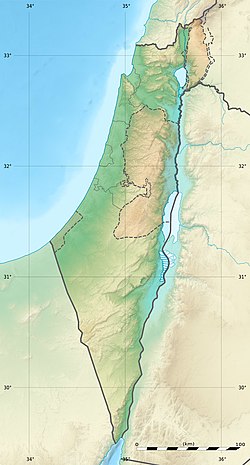Top Qs
Timeline
Chat
Perspective
Rehovot-in-the-Negev
Ancient city in the Negev, Israel From Wikipedia, the free encyclopedia
Remove ads
Rehovot-in-the-Negev (English), from Rehovot ba-Negev (רחובות בנגב, modern Hebrew name), derived from Khirbet Ruheibeh (Arabic, 'Ruheibeh Ruins'), is an archaeological site in the Wadi er-Ruheibeh area of the central Negev in Israel,[1] containing the remains of an ancient town. Apparently founded in the first century CE by the Nabateans, it was a thriving city by the fifth century during the Byzantine period, when it grew to more than 10,000 inhabitants, thanks to its being on the Arabian incense trade route.[citation needed]
You can help expand this article with text translated from the corresponding article in Hebrew. (May 2024) Click [show] for important translation instructions.
|
By population, Rehovot-in-the-Negev was the second largest of the Byzantine-period "Negev towns".[2]
The city was repeatedly hit by earthquakes, the major 7th-century seismic event which destroyed Avdat also leading to the abandonment of this city.[3]
Remove ads
No biblical connection
Easton's Bible Dictionary, published in 1893-97, tentatively associated the well dug by Isaac in Gerar and called by him Rehoboth (see Genesis 26:22) with a site "in Wady er-Ruheibeh, some 20 miles south of Beersheba."[4] Modern archaeology, however, dismisses the identification of Ruheibeh (Rehovot-in-the-Negev) with Isaac's Rehoboth, because the site contains no remains older than the Roman period.[1]
Remove ads
See also
References
Wikiwand - on
Seamless Wikipedia browsing. On steroids.
Remove ads
